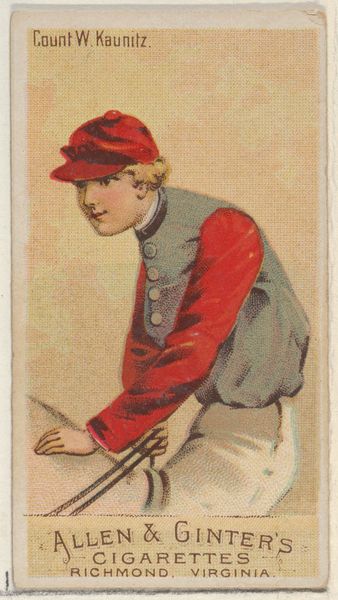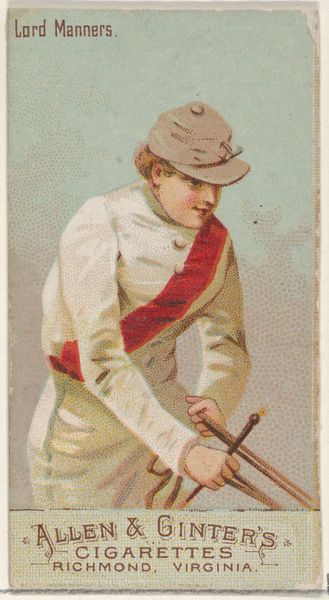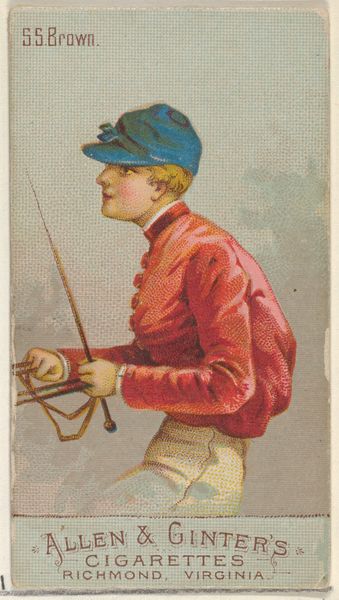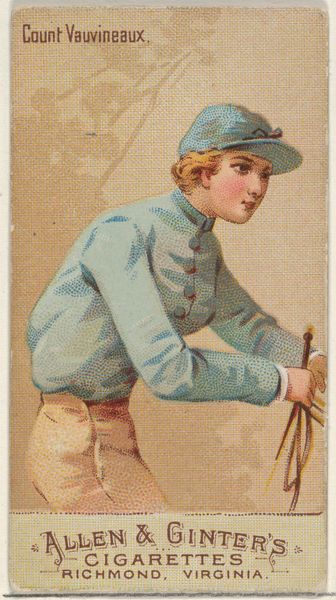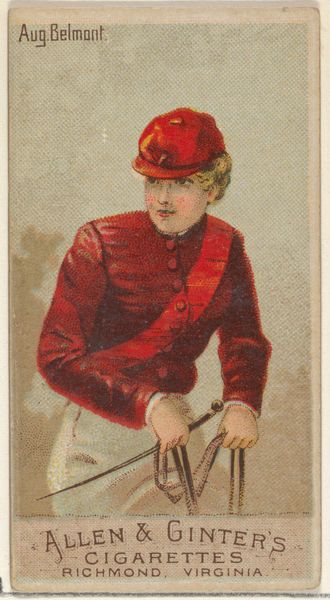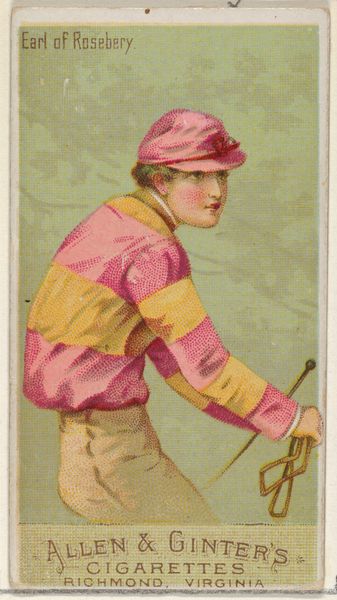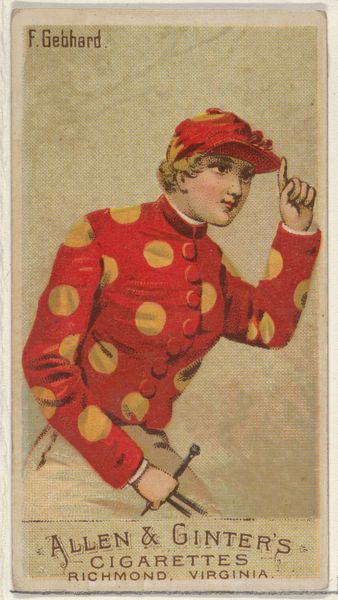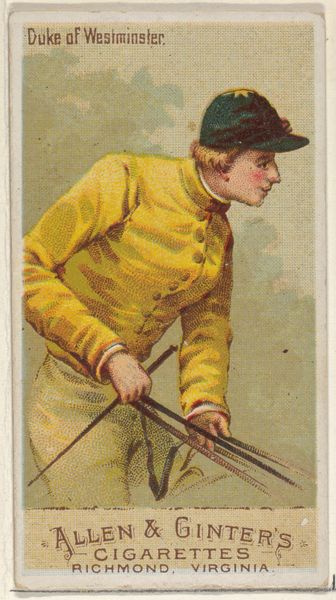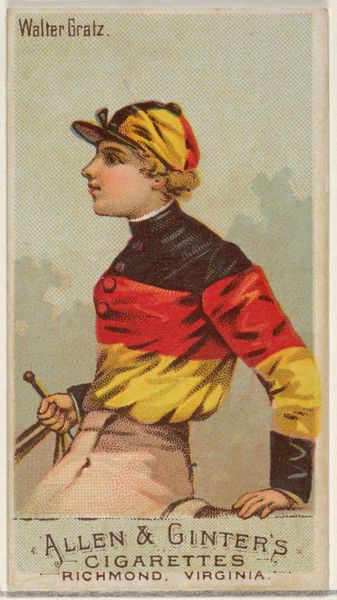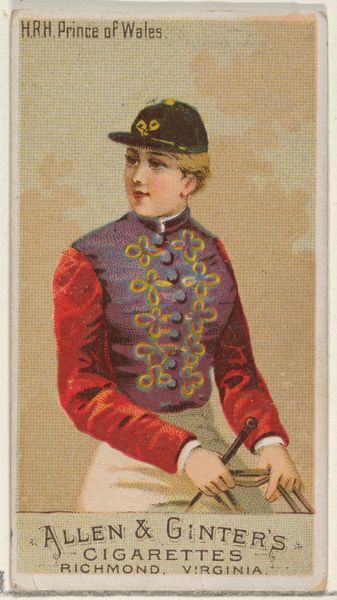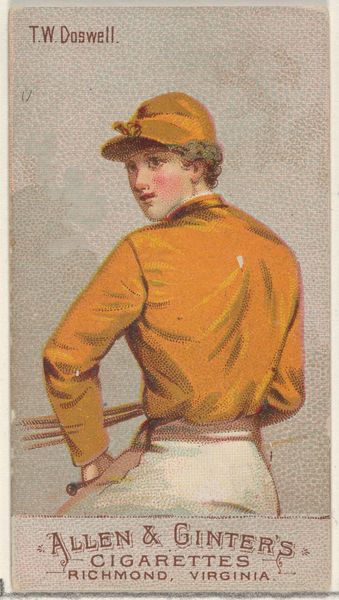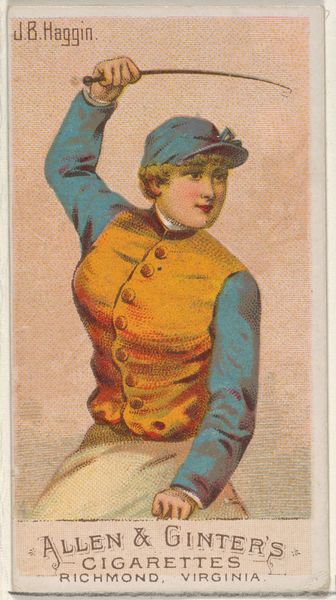
Baron Schickler, from the Racing Colors of the World series (N22a) for Allen & Ginter Cigarettes 1888
0:00
0:00
drawing, coloured-pencil, print
#
portrait
#
drawing
#
coloured-pencil
# print
#
caricature
#
coloured pencil
#
academic-art
#
portrait art
Dimensions: Sheet: 2 3/4 x 1 1/2 in. (7 x 3.8 cm)
Copyright: Public Domain
Curator: Here we have "Baron Schickler, from the Racing Colors of the World series (N22a)" created in 1888 for Allen & Ginter Cigarettes. It's currently housed at the Metropolitan Museum of Art. What are your immediate thoughts? Editor: The first thing that strikes me is the tension created by the exaggerated pose. There’s a dynamic, almost unstable energy, despite its small scale and illustrative purpose. Curator: It's interesting you point out the instability. These cards were inserts in cigarette packs, aimed at consumers who sought status through tobacco use. The very act of collecting and trading these small, mass-produced images became a social game reflecting class aspirations. Editor: Right, and the formal elements reinforce that tension. Look at the sharp contrasts: the crimson sleeves against the pale waistcoat, the way his gaze pulls upwards and away. It directs our eye, suggesting something beyond the frame itself. Curator: Precisely! These "Racing Colors" were not just documentation; they functioned as aspirational objects. Consider the material—a simple color print. Yet it was designed to evoke a sense of luxury and association with the global elite, all fueled by cigarette consumption. Editor: The composition almost abstracts him. The reduced palette and the way his body twists... it almost veers into caricature, exaggerating form for emphasis. Note how the handling of colour adds to the tension and the lines defining his features have an elegance which accentuates that tension further. Curator: I see the caricature too. That subtle distortion, embedded within mass-produced commodity, it underscores how social identity was being manufactured and consumed alongside the cigarettes themselves. The means of producing and distributing such images had a deep influence on art and culture. Editor: In summary, this image, small as it is, uses its formal properties – colour, line, and composition - to capture the energy of motion and also imply tensions between class, activity and industry. Curator: And considering this humble card, produced to promote tobacco sales, we get an incite into the production, commodification, and aspiration of its contemporary audience and also the era which helped to birth consumer culture.
Comments
No comments
Be the first to comment and join the conversation on the ultimate creative platform.
